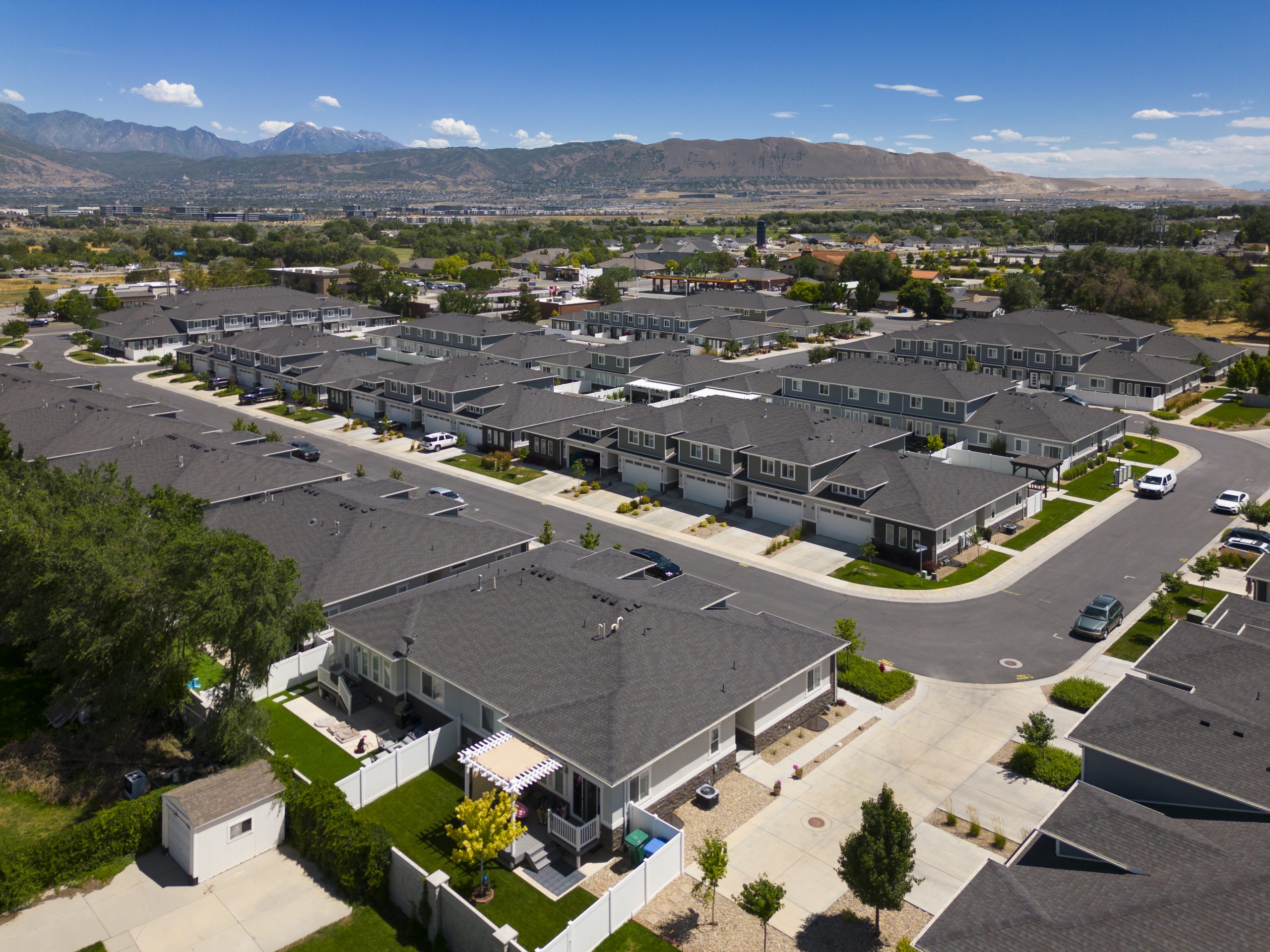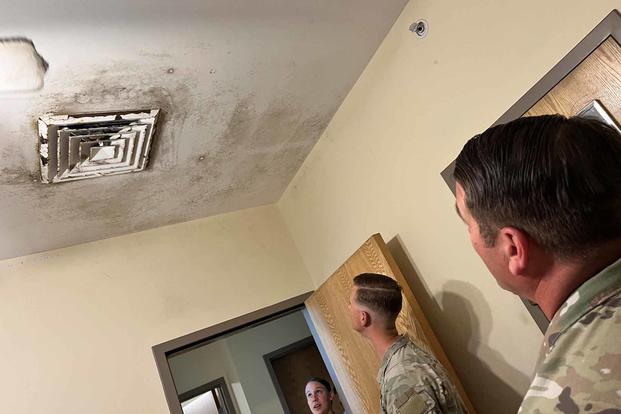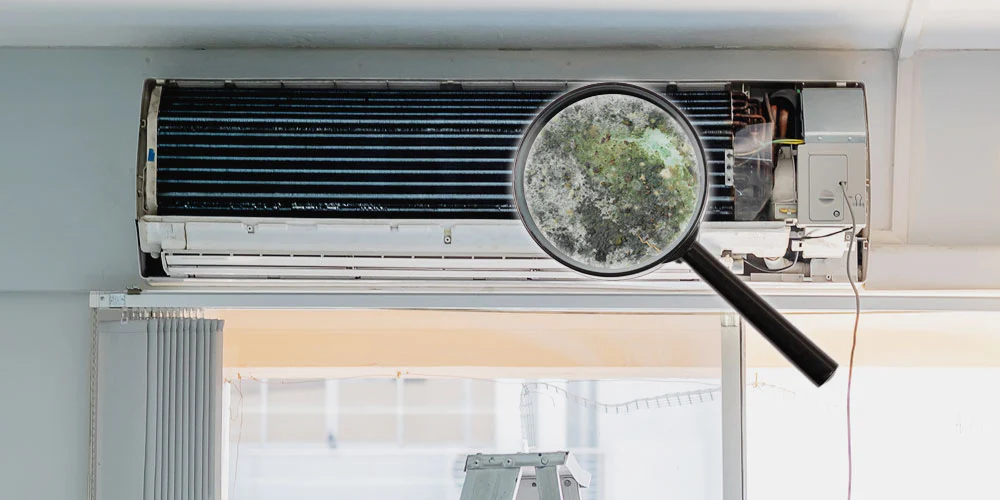
Why Mold in Military Housing is a Common Problem
Mold thrives in environments with excess moisture, which can be common in military housing due to poor ventilation, leaks, or high humidity. Many military families have reported mold issues in their homes, particularly in older housing units that may not have undergone proper maintenance or updates. Mold can grow in hidden areas such as behind walls, under carpets, and inside HVAC systems, making it hard to spot until it becomes a serious health hazard.
Recent investigations have found that some military housing companies have failed to adequately address mold issues, leaving many families dealing with the consequences on their own. These issues can lead to not only property damage but also health concerns, particularly for children and individuals with respiratory conditions like asthma.
Signs of Mold in Military Housing

Mold can be tricky to identify, especially if it’s hidden in areas that are not easily visible. Here are some common signs that you may have a mold issue in your military housing:
- Musty odors: Mold often produces a strong, musty smell. If you notice persistent, unpleasant odors, it could be a sign of mold growing in hidden spaces.
- Visible mold growth: Mold can appear as black, green, or white spots on walls, ceilings, and other surfaces. It’s especially common in bathrooms, kitchens, basements, and areas with frequent moisture exposure.
- Health issues: Unexplained allergic reactions, persistent coughing, sneezing, or asthma flare-ups can indicate mold exposure. If you or your family members experience these symptoms, mold might be the culprit.
- Water damage: Leaks, water stains, or previous flooding are red flags. Where there’s water damage, mold is likely to follow.
What to Do if You Suspect Mold in Military Housing
1. Report the Mold to Housing Management Immediately
The first step in dealing with mold is to report it to your housing management or the base housing office. Submit a formal work order as soon as you notice mold or signs of moisture. Make sure to document the issue with photos and written descriptions. Keep records of all communications with housing management, as you may need them later if the issue escalates.
According to the Military Housing Privatization Initiative (MHPI), base housing providers are responsible for maintaining safe living conditions, which include addressing mold problems. If your request is ignored or not handled promptly, you may need to escalate the issue (discussed further below).
2. Request Professional Mold Testing
If the mold problem is severe or if you’re concerned about the health risks, request that your housing management perform professional mold testing. DIY mold test kits can help you identify if mold is present, but professional testing is more thorough and accurate, especially when it comes to detecting hidden mold and mycotoxins. If the housing management is unresponsive, you may need to hire a third-party mold inspector and provide them with the findings to push for action.
3. Escalate the Issue to Command or Military Advocates
If your housing management is not addressing the mold issue in a timely manner, escalate the problem to your chain of command or reach out to a military housing advocate. Many military families have turned to advocacy groups like the National Military Family Association for support in navigating housing challenges.
In some cases, housing management companies may face penalties for failing to properly address mold and other health hazards. Escalating the issue can ensure that your concerns are taken seriously and resolved promptly.
4. Request Relocation if Necessary
If the mold problem is severe and poses an immediate health risk, you may need to request relocation to temporary or alternative housing. Military housing providers are responsible for offering you safe living conditions, and if mold remediation will take time or if the issue can’t be resolved, you should not be forced to remain in a hazardous environment.
Health Risks Associated with Mold Exposure
Exposure to mold can lead to a wide range of health problems, especially for individuals with allergies, asthma, or weakened immune systems. Some common health issues associated with mold exposure include:
- Allergic reactions such as sneezing, runny nose, and itchy eyes
- Respiratory problems, including coughing and shortness of breath
- Asthma attacks or worsening asthma symptoms
- Fatigue, headaches, and dizziness
If you or your family members are experiencing health problems that could be linked to mold exposure, it’s essential to address the mold issue as quickly as possible. Consult with a healthcare provider, and let them know about your living conditions.
Mold Remediation and Prevention in Military Housing

Once the mold has been identified, the next step is remediation. Mold remediation involves removing the mold and fixing the underlying moisture problem. Here’s how the process typically works:
1. Identifying and Fixing the Source of Moisture
The first step in mold remediation is identifying the source of moisture, whether it’s a leaky pipe, poor ventilation, or water damage. Without fixing the moisture problem, mold will return even after it’s removed. Housing management should be responsible for identifying and repairing leaks or other water-related issues.
2. Removing Mold-Infested Materials
Moldy materials like drywall, insulation, and carpet may need to be removed and replaced. This step is crucial for preventing further mold growth and protecting your family from exposure. If the mold problem is severe, professionals with experience in mold remediation will use specialized equipment to safely remove contaminated materials.
3. Cleaning and Disinfecting
After removing mold-infested materials, all affected surfaces should be cleaned and disinfected using products designed to kill mold spores. This helps prevent mold from spreading to other areas of the home. Some common mold-killing products include bleach solutions, vinegar, and specialized mold remediation solutions like those found on the EPA’s mold cleanup guide.
4. Ongoing Prevention Measures
To prevent future mold issues, it’s important to control moisture levels in your home. Regularly inspect your home for leaks, ensure proper ventilation, and use dehumidifiers in areas prone to high humidity, such as basements and bathrooms. Keeping your living space dry and well-ventilated is the best way to prevent mold from returning.
Conclusion
Mold in military housing is a significant issue that requires immediate attention to protect your family’s health and the safety of your home. By identifying the problem early, reporting it promptly, and following up with housing management, you can ensure that mold issues are properly addressed. Remember, you have rights as a military family to safe living conditions, and there are resources available to help you navigate mold remediation and advocate for better housing.
If you’re dealing with mold in your home, don’t wait—contact Citywide Mold Mitigation for professional mold remediation services and expert guidance on creating a healthier living environment

